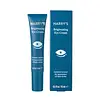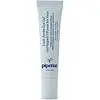What's inside
What's inside
 Key Ingredients
Key Ingredients

 Benefits
Benefits

 Concerns
Concerns

 Ingredients Side-by-side
Ingredients Side-by-side

Water
Skin ConditioningGlycerin
HumectantDiisostearyl Malate
EmollientSilica
AbrasiveDimethicone
EmollientBoron Nitride
AbsorbentNiacinamide
SmoothingAsparagopsis Armata Extract
Skin ProtectingAscophyllum Nodosum Extract
Skin ConditioningSqualane
EmollientHydrogenated Starch Hydrolysate
HumectantHydrogenated Lecithin
EmulsifyingCarbomer
Emulsion StabilisingAmmonium Acryloyldimethyltaurate/Vp Copolymer
Potassium Sorbate
PreservativeSodium Hydroxide
BufferingSodium Carbonate
BufferingT-Butyl Alcohol
PerfumingHydroxyacetophenone
AntioxidantEthylhexylglycerin
Skin ConditioningPhenoxyethanol
PreservativeCI 77163
Cosmetic ColorantWater, Glycerin, Diisostearyl Malate, Silica, Dimethicone, Boron Nitride, Niacinamide, Asparagopsis Armata Extract, Ascophyllum Nodosum Extract, Squalane, Hydrogenated Starch Hydrolysate, Hydrogenated Lecithin, Carbomer, Ammonium Acryloyldimethyltaurate/Vp Copolymer, Potassium Sorbate, Sodium Hydroxide, Sodium Carbonate, T-Butyl Alcohol, Hydroxyacetophenone, Ethylhexylglycerin, Phenoxyethanol, CI 77163
Water
Skin ConditioningSqualane
EmollientChenopodium Quinoa Seed Extract
Skin ConditioningCaffeine
Skin ConditioningSodium Carbomer
Emulsion StabilisingSodium Hyaluronate
HumectantHydroxyacetophenone
Antioxidant1,2-Hexanediol
Skin ConditioningCaprylyl Glycol
EmollientMica
Cosmetic ColorantPhytic Acid
Tocopherol
AntioxidantCI 77891
Cosmetic ColorantMaltodextrin
AbsorbentSodium Benzoate
MaskingSodium Hydroxide
BufferingGardenia Florida Fruit Extract
Skin ConditioningIngredients Explained
These ingredients are found in both products.
Ingredients higher up in an ingredient list are typically present in a larger amount.
Hydroxyacetophenone is antioxidant with skin conditioning and soothing properties. It also boosts the efficiency of preservatives.
This ingredient is not irritating or sensitizing.
Sodium Hydroxide is also known as lye or caustic soda. It is used to adjust the pH of products; many ingredients require a specific pH to be effective.
In small amounts, sodium hydroxide is considered safe to use. However, large amounts may cause chemical burns due to its high alkaline.
Your skin has a natural pH and acid mantle. This acid mantle helps prevent harmful bacteria from breaking through. The acid mantle also helps keep your skin hydrated.
"Alkaline" refers to a high pH level. A low pH level would be considered acidic.
Learn more about Sodium HydroxideSqualane is an emollient that helps the skin hold onto moisture. It's an oily liquid that occurs naturally in certain types of fish and plant oils.
Because squalane boosts hydration in the skin, it also comes with plenty of benefits: it is an antioxidant and can help fight free radicals and skin damage. Squalane is also found to have a detoxifying effect when applied.
Squalane comes from squalene, which occurs naturally within the sebum of our skin. It is one of the oils our skin produces to keep itself hydrated. Squalane is the hydrogenated version of squalene and has a longer shelf life.
Research shows that squalane is non-irritating (even at 100% concentration).
In general, it's a fantastic ingredient. It does a great job at hydrating the skin, and it's suitable for those with sensitive skin.
The source of squalane may impact malassezia / fungal acne. This is because olive oil derived squalane can contain impurities such as fatty acids and plant waxes. Sugarcane derived squalane is recommended for anyone with malassezia concerns.
Is squalane vegan?
This depends on the source. Squalane can be derived from both plants and animals. Most squalane used in skincare comes from plants.
Please note: the source of squalane is only known if disclosed by the brand. We recommend reaching out to the brand if you have any questions about their squalane.
Read more about squalene with an "e".
Is squalane an oil?
Squalane is often called an oil, but it’s technically not; it’s a hydrocarbon, meaning it’s only made of carbon and hydrogen, unlike true oils which are triglycerides made of fatty acids and glycerol.
The term “oil-free” isn’t regulated, so companies can define it however they want. Some exclude all oils, while others just avoid mineral oil or comedogenic oils.
While some people avoid oils thinking they cause breakouts, the right kind of oil (or oil-like ingredient like squalane) can actually help balance and hydrate your skin. It’s worth testing out simple oils or squalane to see what works best for your skin.
Learn more about SqualaneWater. It's the most common cosmetic ingredient of all. You'll usually see it at the top of ingredient lists, meaning that it makes up the largest part of the product.
So why is it so popular? Water most often acts as a solvent - this means that it helps dissolve other ingredients into the formulation.
You'll also recognize water as that liquid we all need to stay alive. If you see this, drink a glass of water. Stay hydrated!
Learn more about Water